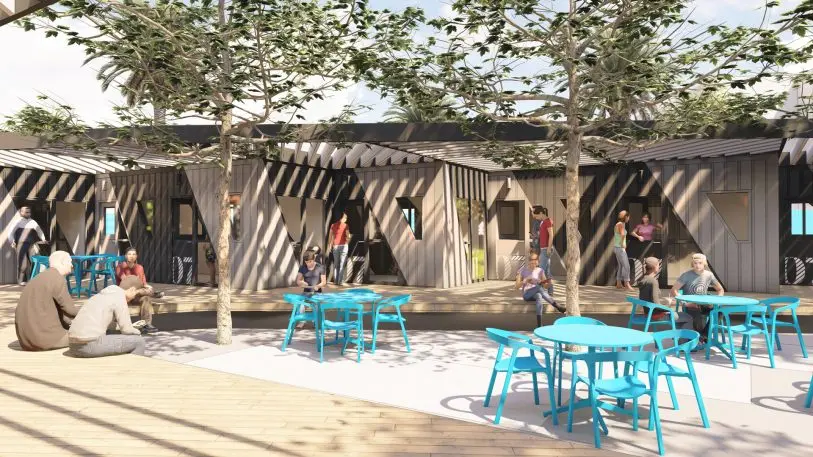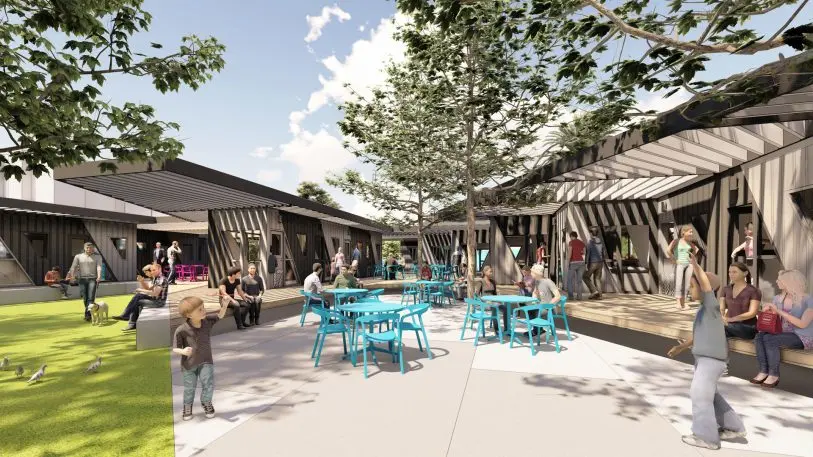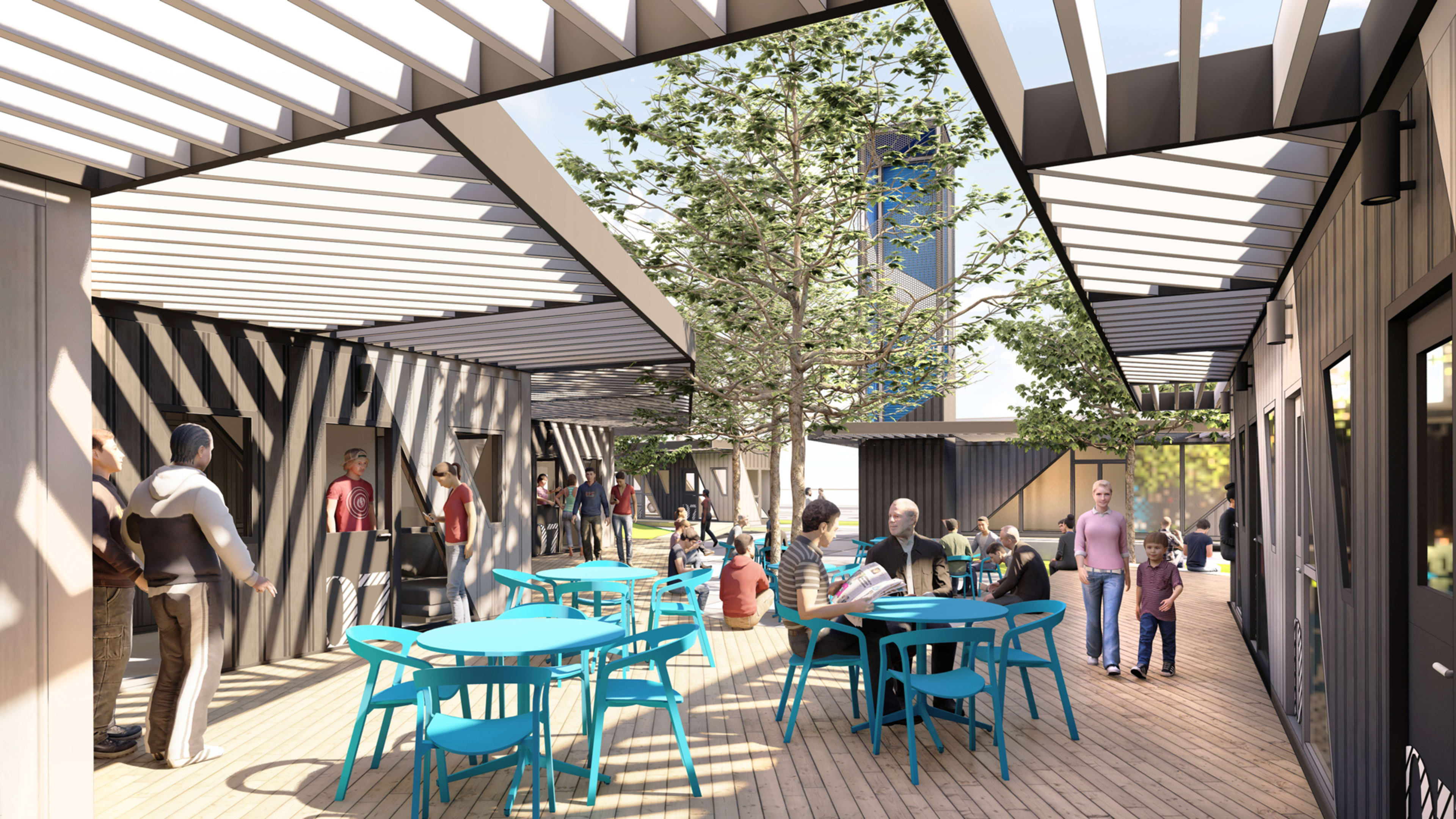L.A. is spending more than a billion dollars to build thousands of new units of supportive housing for homeless Angelenos–but while that process will take years, it’s also working to build shelters and other housing across the city much more quickly. One concept for that process, from L.A.-based R&A Architecture and Design, shows how a small slice of land could turn into a comfortable community in around 90 days.
“We’re interested in how you can do a project like this in a way that’s ultra-fast, but also very clearly about the neighborhood and the quality of space and quality of architecture,” says R&A partner Shawn Gehle. The design uses decommissioned shipping containers retrofitted into housing by a local prefab company called Crate Modular, and staggers them in a flexible pattern that can be configured into larger, hall-like shelter spaces, or smaller units for families or individuals. Other containers provide offices for on-site social workers and showers and bathrooms. The site doesn’t look like a parking lot filled with shipping containers; between the units, there are terraces, gardens, and other community space.

One community garden–called a “zipper” garden because it connects the housing with the surrounding neighborhood–would be open both to those living in the new housing and others who live nearby. “The zipper garden allows both groups to interact in a very democratic and level way around the harvesting of food,” Gehle says. The design may also be a way to begin to deal with the perennial challenge of new housing projects built for homeless people: Neighbors, in many cases, fiercely resist this type of project, even when they see people struggling with homelessness on the street every day.
Los Angeles declared an “emergency shelter crisis” in 2018, and became the first city in the state to make use of a new California law that allows cities to build homeless shelters on any land owned or leased by the city government. Special standards make it possible to fast-track the planning and construction process. Through a new plan called A Bridge Home, the city announced that it would build new bridge housing–shelters that allow people to stay all day long, and have on-site support to help residents–throughout each of the L.A.’s 15 council districts. The first opened in December on a parking lot in downtown L.A. Another will soon open in a landmark building in Hollywood that was originally built for actresses in the 1920s. But in other areas, including Koreatown and Venice, communities have resisted. One community association in Venice threatened to sue.

Homeless advocates are working to engage neighbors in different ways, says Tommy Newman, who works with United Way of Greater Los Angeles to run a campaign to educate communities about these solutions. “The way this community engagement happened for decades, you put a microphone in the middle of the room, and everybody lines up and starts shouting into the microphone,” he says. “And the reasonable folks in the room sort of quietly slip out the back door because that’s not what they really want to do with their Tuesday night, and they’re not going to get any questions answered. So we’ve really pushed hard to reframe the way these community meetings happen.” Now, he says, they’re set up like open houses, with visual examples and staff who can answer questions one-on-one, countering misconceptions that building shelters might bring an increase in crime in the neighborhood.

Design is another piece of convincing communities to support projects. “Good design is critical,” says Newman. “Both for the facility or building’s ability to fit into a neighborhood–it’s critical to build support–and then also for the folks who are living there.” The bridge housing is meant to be temporary, but Gehle argues that it’s still important that the housing fits into a neighborhood, and given the scale of the crisis, it may also be in place longer than initially planned.
The architects submitted the concept to the city as part of a request for shelters that could be built as quickly as possible, and it may later be constructed–though there is no sense yet of the total cost. The city is working on multiple projects to address homelessness; beyond A Bridge Home, the city council also recently voted to create a new pilot program asking developers to propose solutions for faster, cheaper ways to build new housing. Gehle wants the design to serve as a prompt to think about the best way to provide this type of shelter. “Any solution that we can find to the problem is necessary,” he says. “But we feel that we need to attack it from a design and a neighborhood point of view. These things have to be great contributors to the neighborhood fabric, and we believe that will help the political arm of these projects move forward.”
Recognize your brand’s excellence by applying to this year’s Brands That Matter Awards before the early-rate deadline, May 3.
